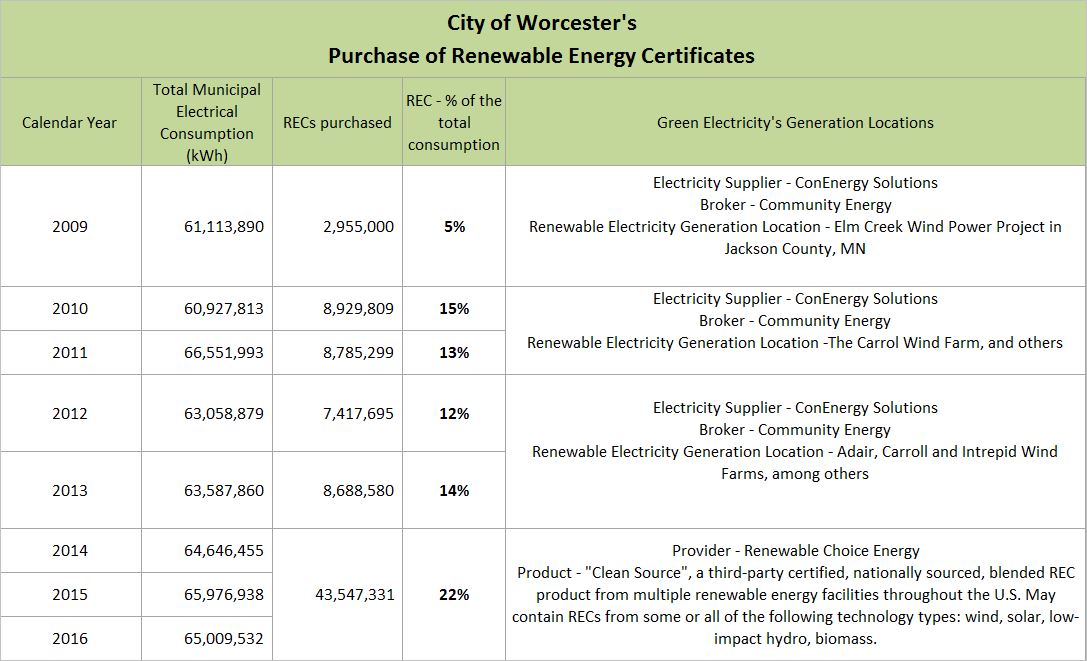Municipal Renewable Energy Certificates
Annually since 2009, the City has been purchasing Renewable Energy Certificates (RECs) in compliance with the City Council’s 2005 resolution to set a goal of 20% clean, renewable electricity for municipal use by 2010. The resolution also encouraged residents and businesses to choose the clean energy option on their own energy bills.
Between 2014 and 2016, the City has exceeded this goal by purchasing enough RECs to cover 22% of the municipal electrical consumption. The total cost to the City is small, at less than quarter of one percent of the total municipal electrical costs.

In August 2012, Worcester joined EPA's Green Power Partnership and was designated a Green Power Partner due to its commitment to purchase green electricity above the minimum 20% eligibility requirement. In April 2015, EPA included Worcester in The Top 30 Local Government list, which includes the largest green power users among local government partners within the Green Power Partnership.
As of 2014, approximately 34% of the City's municipal electricity came from renewable energy. Renewable Energy Certificates (RECs) purchased by the City accounted for 23% (later adjusted down to 22%), with the remaining 11% coming from the state-mandated (via Renewable Portfolio Standard) renewable portion of electricity supplied to Massachusetts that year (including class I and II renewables, excluding waste and alternative energy).
To see Worcester's Renewable Energy Certificates, click here: 2009, 2010, 2011, 2012, 2013, 2014 - 2016
How RECs Work
 Renewable Energy Certificate provides a way for consumers of electricity to benefit from and support renewable energy technologies without needing to own or operate their own renewable energy generation facilities.
Renewable Energy Certificate provides a way for consumers of electricity to benefit from and support renewable energy technologies without needing to own or operate their own renewable energy generation facilities.
When a renewable energy generation facility (for example, a photovoltaic system) produces electricity, the electricity itself enters the grid, where it mixes with electricity from all other sources. To account for the fact that this facility produced energy from a renewable source (i.e. its green attributes), it is allotted one REC for every megawatt-hour of electricity it produces, which can then be sold.

